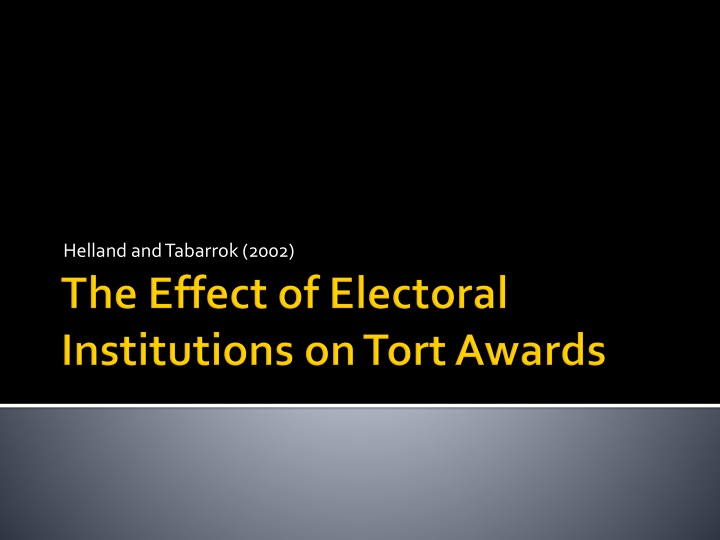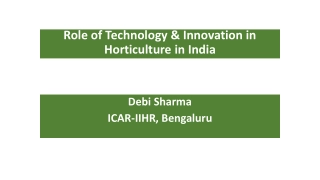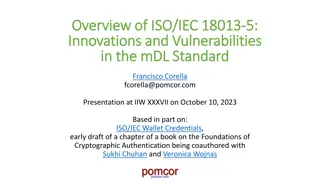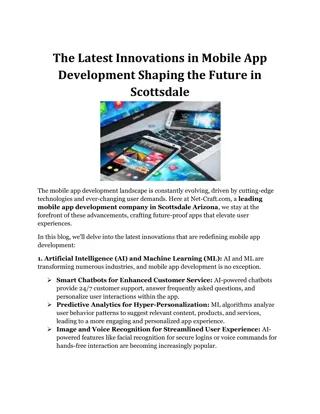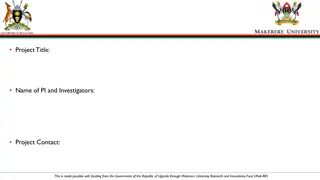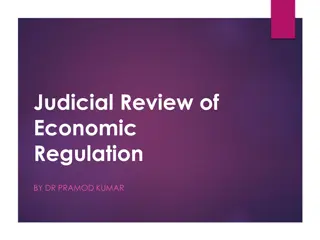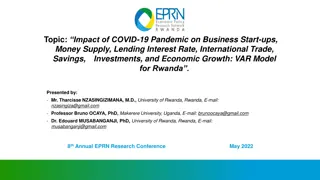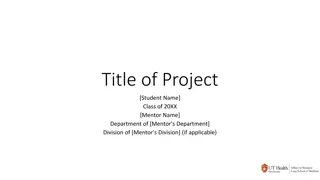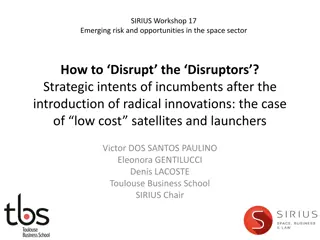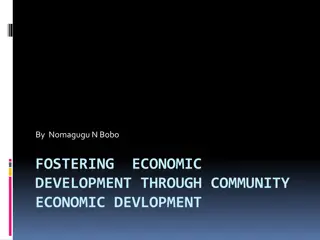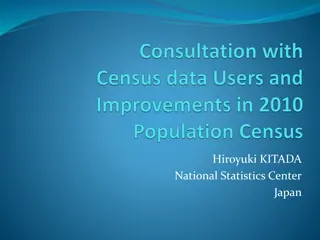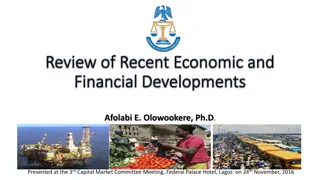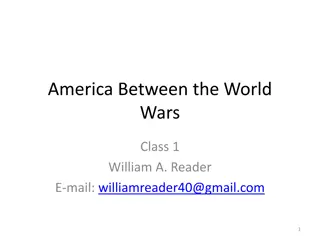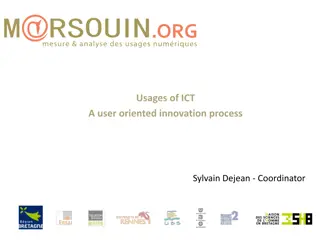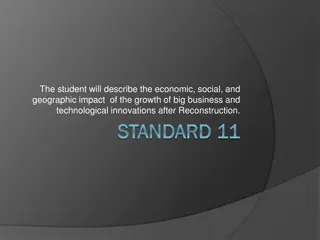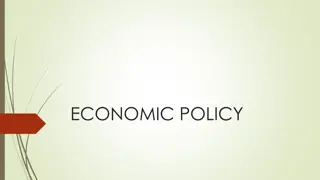Innovations in Economic Research: A Comprehensive Review
This study by Helland and Tabarrok (2002) offers a detailed examination of various innovations in economic research, providing valuable insights into emerging trends, methodologies, and implications for the field. The authors explore key advancements and their impact on the economic landscape, shedding light on new perspectives and approaches shaping the discipline. Through a comprehensive analysis, this work contributes to a deeper understanding of contemporary economic research and its evolving dynamics, offering a rich resource for scholars, practitioners, and enthusiasts alike.
Download Presentation

Please find below an Image/Link to download the presentation.
The content on the website is provided AS IS for your information and personal use only. It may not be sold, licensed, or shared on other websites without obtaining consent from the author.If you encounter any issues during the download, it is possible that the publisher has removed the file from their server.
You are allowed to download the files provided on this website for personal or commercial use, subject to the condition that they are used lawfully. All files are the property of their respective owners.
The content on the website is provided AS IS for your information and personal use only. It may not be sold, licensed, or shared on other websites without obtaining consent from the author.
E N D
Presentation Transcript
Politicians in robes face incentives just like other politicians. Federal judges are appointed with life tenure and article 3 section 1 of the U.S. constitution even goes so far as to require that a judge's salary shall never be reduced. Federal judges, however, make up only a small minority of U.S. judges. There are approximately 30,000 judges in the United States and less than 1500 of them are Federal judges. State court judges are much less insulated from outside forces than are federal judges many are elected, almost none have lifetime tenure and their salaries are rarely, if ever, protected. State court judges are elected in 23 states and appointed in 27 with 10 states using partisan elections. Partisan elections, essentially the normal type of elections under which judges run on party banners just like other politicians, are especially important and are the focus of this paper.
Plaintiffs almost always sue in the state in which they live so most plaintiffs are voters. Defendants, however, are often corporations headquartered in other states or even other countries. Our hypothesis is that in states that elect their judges plaintiffs will be especially powerful when there are out-of-state defendants and hence awards will be larger. Higher awards are a judge s way of performing constituency service!
"As long as I am allowed to redistribute wealth from out-of-state companies to injured in-state plaintiffs, I shall continue to do so. Not only is my sleep enhanced when I give someone's else money away, but so is my job security, because the in-state plaintiffs, their families, and their friends will reelect me." Richard Neely (1988), West Virginia Supreme Court of Appeals.
Elected judges must raise significant amounts of campaign funds. Where do these funds come from? Answer: trial lawyers. Although anyone may be a party to a legal action, judges are randomly drawn so a defendant and plaintiff do not know a priori whom or when to give the contribution. Trial lawyers are the repeat players. Plaintiffs' lawyers obviously benefit from higher awards. But in general so do defense attorneys! Defense attorneys want higher expected awards. Their pay is based on turning a case with a high expected award into a low award.
"[I]t should be obvious that the in-state local plaintiff, his witnesses, and his friends, can all vote for the judge, while the out-of-state defendant can't even be relied upon to send a campaign donation. Richard Neely (1988,62).
"It is not surprising that attorneys are the principal source of contributions in a judicial election...A candidate for the bench who relies solely on contributions from non-lawyers must reconcile himself to staging a campaign on something less than a shoestring. If a judge cannot sit on a case in which a contributing lawyer is involved as counsel, judges who have been elected would have to recusethemselves in perhaps a majority of the cases filed in their courts.' Rocha v. Ahmad, 662, S.W.2d 77, 78 (Tex.Ct.App. 1983). 5
Judges decide which evidence is admissible. In every trial there will be evidence that one side would like included and the other would not. Judges Rule on Motions and Counter-Motions Jury Instructions Juries reach their verdicts by answering questions, called special issues, posed by the judge. Both sides submit questions and endeavor to keep certain questions out. Lawyers feel that these questions in effect determine the size of the award.
The data on torts was extracted from Jury Verdict Research's Personal Injury Verdicts and Settlements on CD-ROM. JVR collects data on trials, including the plaintiff s injury, the court s location, the trial verdict and the award amounts are drawn directly from court records. Using an extensive survey of lawyers, JVR also collects data on settlements. Our data set contains information on 52,545 trials, and 22,455 settled cases. The data set contains trials between 1988 and 1996 from all 50 states. We used the COMP database to locate the headquarters of each business defendant in our sample.
We have data on over 52 thousand trials involving personal injuries. The data set contains the name of the defendant which may be either a business or an individual. We checked whether the business was headquartered in-state or out-of-state. We then compare four types of cases Partisan Out, Partisan In, NonPartisanOut, and NonPartisanIn. Partisan Out denotes trials in states that use partisan elections to select their judges when the defendant was an out-of-state business. The other variables are defined similarly. Main idea is to look at Partisan Out Non Partisan Out. In other words is the bias against out of state businesses bigger in states that use partisan elections to select their judges than in other states?
Variable Total Award (all awards) Constant (Non-Business Cases) $252,540*** (19524) Partisan Out $936,190*** (143,800) Partisan In $408,450*** (60,090) Non Partisan Out $272,780*** (84070) Non Partisan In $138,730*** (43,003) Number of Cases 52,545 Differences in Differences Partisan Out-Non Partisan Out 936,190-272,780= 663,410*** p=0.0001 *** Significant at the .01 level
Estimation Procedure-Overview Estimation Procedure First and Second Stage Settlement Probit (75,000) Settle (22,449) Settlement Award Go To Trial (52,551) Inverse Mill's Ratio - Settle Win Probit Inverse Mill's Ratio - Win Win (29,290) Trial Award (29,290) Figure One
All regressions include injury variables (death, major, minor, rape etc.), tort law variables (punitive cap, evidence standard, bifurcated trial etc.), case types (prod. Liability, med mal, auto etc.), local poverty rates etc.
The result is robust. Controlling for other variables and making other such changes does not change the basic result. Most important additional test. The Constitution (Art. III, Sec. 2(1)) gives the Federal courts the power to decide controversies between citizens of different states. Historically, Federal diversity jurisdiction was supported by out-of-state businesses who feared they would be disadvantaged in pro-plaintiff/pro-debtor state courts. Today lawyers continue to cite out-of-state and anti- business bias as one reason for removing cases to Federal court. Since 1938 diversity cases have been decided on the basis of state law.
We compare awards in cases where Federal judges apply the law of partisan elected states with awards in cases where Federal judges apply the law of non-partisan states. If all of the partisan election effect is due to differences in the law of torts in partisan elected states then the Federal and State difference should be equal. When federal judges, who are appointed with life tenure, decide cases using the same law as state court judges do we also see a partisan bias? Answer: NO.
Awards vary across the states for reasons that are not well understood and have little to do with justice. An important variation is that: 1. Awards are higher in states that use partisan elections to select their judges especially when the defendant is an out of state business. Most important conclusion Buy the book!
